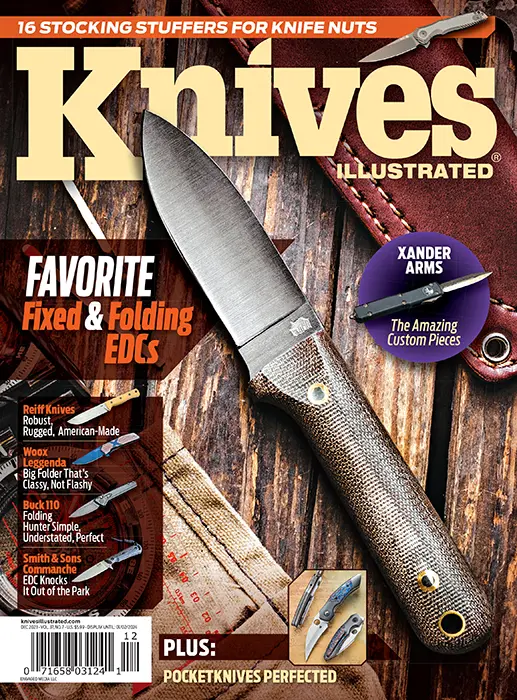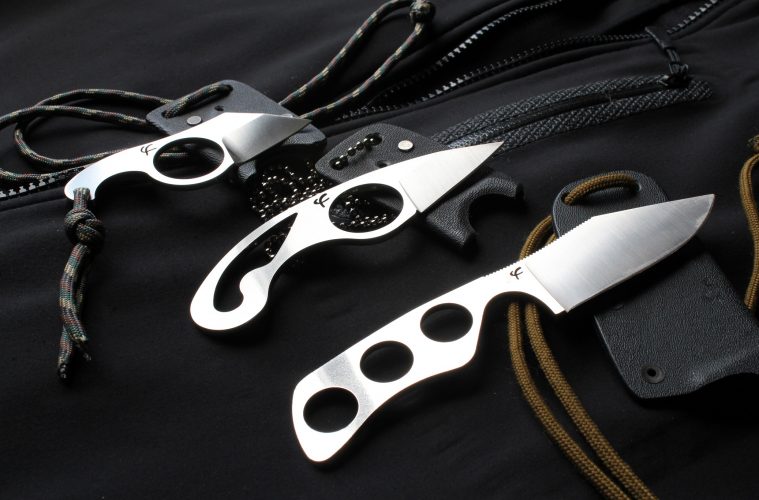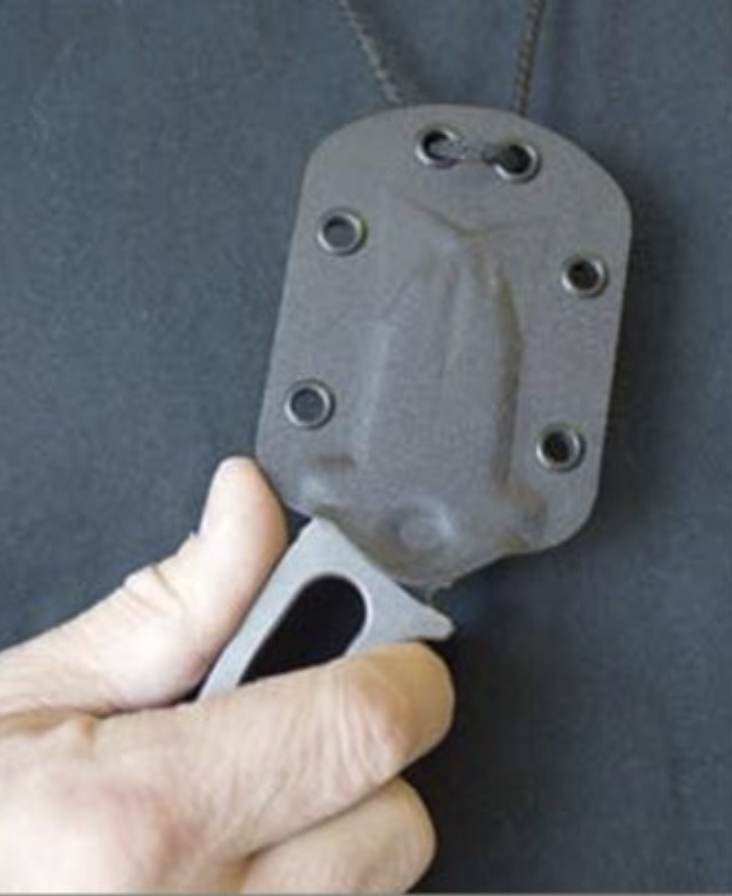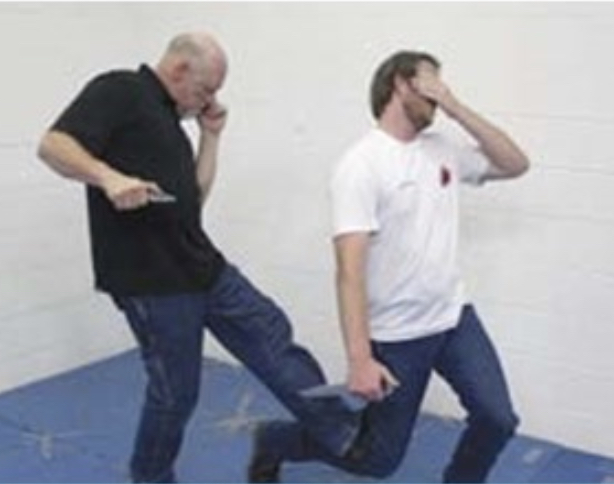Using a knife for self-defense is not as straightforward as you think. Especially when you use a blade like a neck knife. Here’s what you need to know about handling this weapon that could help save your life.
By: Michael Janich
Carrying any weapon for personal defense is a balancing act between combative function and user convenience. If you’re ever forced to use it when confronted by an attacker, bigger is generally better. However, smaller and lighter weapons are easier to conceal, so you’re more likely to have it nearby and ready to use.
One style of knife that tackles this problem in a unique way is the neck knife. Neck knives are small, fixed-blade knives with sheaths that allow them to be worn around the neck like military dog tags. They’re easily accessible when or if an attack occurs.
Choosing the Correct Neck Knife
In addition to shorter-than-average-blades, most neck knives also have less-than-ideal edge geometry. Avoid those and choose a knife with a broad blade, high bevel, and real cutting capability. A thrusting point is fine, but puncture wounds with a sub-3-inch blade aren’t likely to stop an attacker decisively. Resist the urge to focus on stabbing.
Look for knives with handles that are long and wide enough to offer a firm grip. Look for those that are asymmetrically shaped, which allows easy edge orientation by feel. Be particularly careful with integral steel handles. Although they conceal well, they can be slippery and make it difficult to manage impact shock.
Your knife’s sheath should retain the weapon in a handle-down orientation, without the need for any mechanical devices. It should leave enough handle exposed for a solid pre-draw grip. It should be wide enough to lay flat and present the knife in a consistent orientation without spinning or moving about from your normal body motion.
Retrieving Your Neck Knife
One of the most important aspects of defending yourself with a neck knife, is to secure it and quickly respond to a sudden threat. Unlike most weapons, neck knives require a two-handed draw. Committing both your hands to any action leaves you momentarily vulnerable. Your priority is to do whatever is necessary to create the time needed to draw your knife. That means using unarmed defenses, movement, obstacles or simply recognizing the threat from a safe distance.
In general, I recommend only having one layer of clothing between your hand and your neck knife. If you wear multiple layers, tuck the layers closest to your skin into your pants.
If your personal style doesn’t work with that, you can carry the knife next to your body and reach under multiple layers of clothing to get to it. Assuming the most challenging situation—carrying a neck knife under a tucked shirt—start the actual draw process by gripping your shirt firmly with your non-weapon hand just above your belt. Pull your shirt straight up out of your pants and away from your body so you can reach under it with the other hand to establish a solid grip on the knife’s handle.
Once you’ve gripped the handle, move your free hand up and stick it to your forehead just above your eyebrow. This creates a solid guard and protects your head and neck. Pull the knife straight down, keeping it away from your body, so you don’t cut yourself as it clears the sheath.
Putting Your Neck Knife into Action
Once your knife is drawn, apply the skills and tactics of your personal knife-fighting skill set. Adapt it as needed, based upon the limitations of your weapon. Even if your neck knife’s design does allow full-force cuts and thrusts, acknowledge the fact that those tactics alone may not disable your attacker.
From Victim to Aggressor
Prepare to augment your knife techniques with some solid low-line kicking skills. Use your initial responses with the knife to defend against the attacking limb and ideally compromise your assailant’s vision. Then, finish with knee- or ankle-breaking kicks that put your attacker down decisively and allow you to escape.
Like any other weapon, the neck knife is not a self-defense cure-all, but an integral part of your entire self-defense repertoire. To make it a viable option for defending your life, choose your tool carefully, understand and accept its limitations, and train diligently to make your skills as potent as possible.
A form of this article originally appeared in the November 2018 issue of Knives Illustrated.
Do you have a favorite neck knife? Let us know in the comments.
And be sure to check out Knives Illustrated on Facebook @KnivesIllustrated and on Instagram @KnivesIllustratedMagazine and subscribe to our print and/or digital issues here.

 Subscribe / Back Issues
Subscribe / Back Issues

